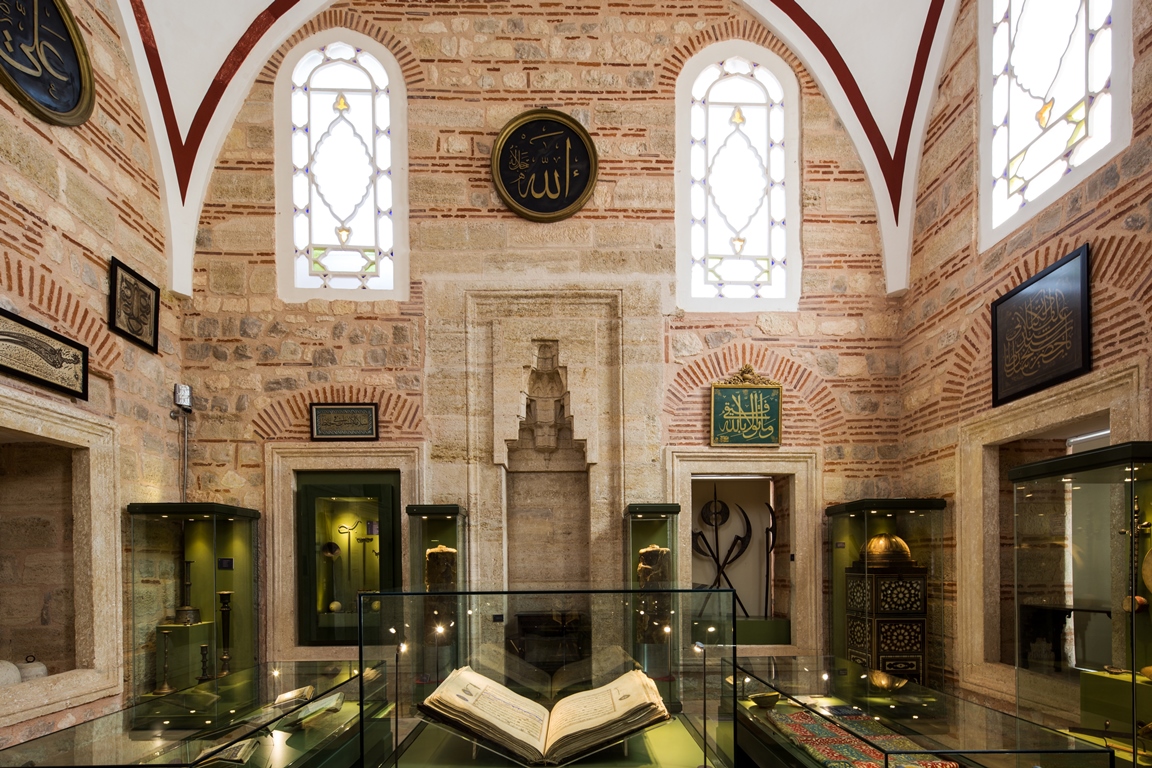“Turkish and Islamic Arts Museum” is the first museum exhibited works Turkish art and Islamic art together. The museum started to be built at the end of the 1800s and finished in 1913. Also it was built by the most important architect, Sinan and opened in the soup kitchen of Süleymaniye Complex in 1914. Its name was “Evkaf-I Islamiye Museum” which means of “Islamic Foundations Museum”, after the declaration of the republic, the name of “Turkish and Islamic Arts Museum” was given.

In 1983, “Turkish and Islamic Arts Museum” was transferred to the Ibrahim Pasha Palace, today’s place, from the soup kitchen of Süleymaniye Complex. Ibrahim Pasha Palace was under the restoration from year 1966 to 1983, and it has become to be able to host of “Turkish and Islamic Arts Museum”.
The palace was gifted to Ibrahim Pasha known as also “Pargalı Ibrahim”, the great vizier of Sultan Süleyman the Magnificent for thirteen years. The exact purpose of construction of the palace isn’t known but it was used by Pashas, grand Viziers after the death of Ibrahim Pasha.
Turkish and Islamic Museum has won many awards by various international institutions and organizations in 1984 and 1985. The museum maintains the world’s most private collection which includes in forty thousand works.
Turkish and Islamic Arts Museum, Carpet Collection
The museum has the world’s richest collection of carpet art. For many years, the museum has been called as “Carpet Museum”. Unique Seljuk carpets, rugs and carpets belonging to the years of 1400s, carpets produced in Anatolia and in Europe in 1600s known as also “Holbein Carpet” are the finest parts of the collection. Many scientists who study on the art of carpet are flocking to the museum all over the world.
Turkish and Islamic Arts Museum, Department of Manuscripts and Calligraphy
The Manuscript Qurans form the large portion of department. It can be regarded as the peak point of the calligraphy arts with the manuscript Miraculous Qurans.
Except for the manuscript Miraculous Qurans, many books with or without pictures can be discovered by the visitors in the museum.
In addition, berats and edicts written by Ottoman Sultans with their Alia State seals are among the works which must be seen.
If a person visits the Turkish Calligraphy Art Museum and “the Manuscripts and Calligraphy department of Turkish and Islamic Arts Museum”, he will absolutely have profound knowledge about the history of the art.
Turkish and Islamic Arts Museum, Department of Wood Carving
The department constitutes of the most important part of wood arts collection belonging to the 9th and 10th centuries. These works also belong to the Anatolian Seljuk Empire and all of them are worth seeing.
Turkish and Islamic Arts Museum, Stone Art Section
Types of tombstones portraying the figures of legendary beings and stones inscriptions written by many different civilizations since the 17th century are the most important samples of stone arts.
Turkish and Islamic Arts Museum, Department of Ceramic and Glass
The most beautiful works of the “ceramic” found in archaeological excavations in the first quarter of the 20th century are exhibited in the section.
Glass arts, niche, wall tiles and mosaic samples used for Konya Kılıçaslan Palace during the period of Anatolian Seljuk State are also exhibited in the museum.
Turkish and Islamic Arts Museum, the Department of Mines Arts
Unique works of the Great Seljuk and Anatolian Seljuk Empires are exhibited in the museum. In addition these, the Ottoman metal arts such as tombac, the crest, bath metal, tombacs of Cizre can be seen in the museum.
Turkish and Islamic Arts Museum, the Ethnography Section
Works belongings to the most recent dates are exhibited in the section of the museum.
Visiting Days and Hours of Turkish and Islamic Arts Museum
The museum is open every day except Mondays between hours of 9 a.m. to 4.30 p.m. and it can be visited in return 5 TL. Museumcard and Museumcard+ owners don’t pay any fees when visiting the museum.
You should visit the Museum of Turkish and Islamic Arts in order to achieve comprehensive information about life styles of Turks’ ancestors.
Hiç yorum yok:
Yorum Gönder